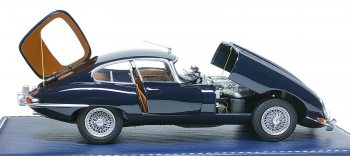
By Geo Tziafas
A true masterpiece, an automotive treasure that, when it was first unveiled six decades ago in 1960 at the Geneva Motor Show, prompted Enzo Ferrari to declare it the most beautiful car in the world, takes the spotlight in the following article. With over 70,000 units of the E-Type produced, it graced the Coventry factory floor in three distinct phases: Series 1 (1961-1968), Series 2 (1969-1971), and Series 3 (1971-1974).
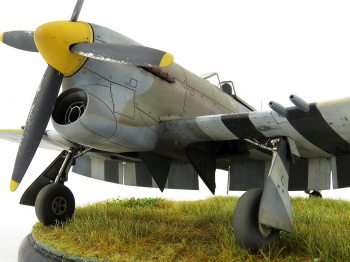
By Gary Wickham
Eduard has recently released a new tooled Hawker Tempest Mk.V family in 1:48 scale. I have the Mk.V Series 1 ProfiPACK (82121) kit as well as the Big SIN (64856) set which includes a full Brassin Cockpit, Exhausts, Wheels and Landing Flaps. I also have some of the Barracuda Studios correction sets including the spinner and radiator intake. I'll highlight all these goodies (and compare them to the kits parts) as I progress through the build
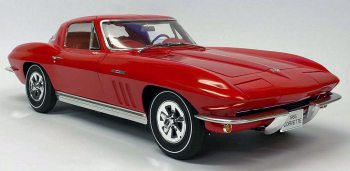
By Lars Wahlström
In 1977, as a Christmas gift from my brother, I got a model kit of a 1965 Chevrolet Corvette Sting Ray in 1/8 scale. The kit was made by Monogram, but the same kit was later also released by Revell. There were editions with the body in both red and blue plastic. I noticed quite immediately that the detail level was low, lower than many models in 1/25 scale. Not even the doors were operable and the chrome-plating quality was really poor. Comparing with the French Heller's super detailed 1/8 model kit of the Citroen B15, which I built earlier, the Corvette was toyish and a real disappointment for an experienced modeller. But I decided to take it on anyway.
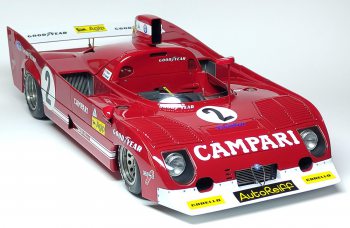
By Geo Tziafas
In the following tutorial I will share with the reader, many photos and explanations about the construction of the Alfa 33TT, I hope it will help and guide, for those who want to build this magnificent MFH kit, but this experience is valid for other similar kits of the same brand. This tutorial, very descriptive and with many good photos, can also serve as a general guide for other MFH kits in the same scale.
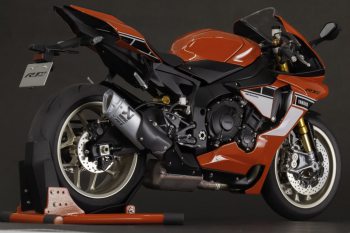
By Ricardo Gonzalez
When I saw this Tamiya kit, I felt like I could do something special by adding aftermarket detail sets and doing a bit of scratch-building. My goal in writing this tutorial is to share with the reader the work I've done, not only in assembling and super-detailing the model but also in showcasing a customization by changing the look proposed by Tamiya.
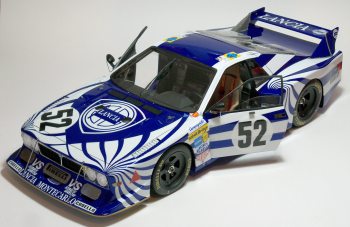
By Geo Tziafas
Starting a Hiro kit build is essentially starting a game of chess. Each move affects the next and the slightest mistake may cost in fitting or detailing issues. In addition, as in the famous board game, the more moves (test fits) you are ahead the better you can predict the way they will interact with each other and the less likely it is to be checkmated during the final assembly.
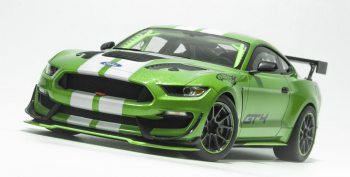
By Edwing E. Merlo Paredes
Basically this kit has been built straight out of the box, using almost all of the parts included in the kit, and small details such as generic photo-etched screw heads have been added. The objective of this tutorial is to share with the reader the steps that I followed to build this model.
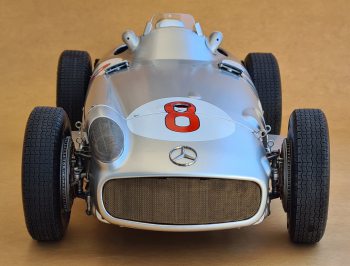
By Mario Covalski
With this photo array I share with the reader my experience with the model adding many missing details, not all, painting parts and applying plastic modeling techniques to improve the appearance of this expensive model. In addition, solving some problems that the kit has and showing tips and tricks to improve or facilitate its assembly.
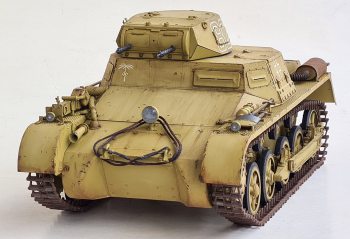
By Mario Covalski
The Panzer I was a small tank built before the start of WWII .This tutorial aims at sharing with the reader my experience in the construction of this model converting it to radio control, and even will be useful for those who build it as a static model, since the reviews say much about the kit but little about the problems I found.
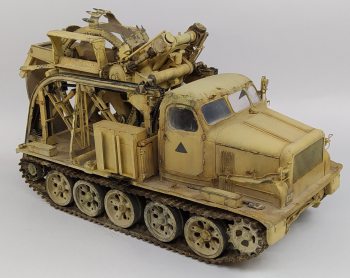
By Pablo Raggi
The BTM is a specialized vehicle of the engineering corps, based on the ATT artillery tractor, which in turn was built over the T-54 hull tank, using the cabin of the ZIS-150 truck. Not only did the BTM derive from this project, but there were at least 4 other designs, all for a specific use, including a version for Antarctic exploration.
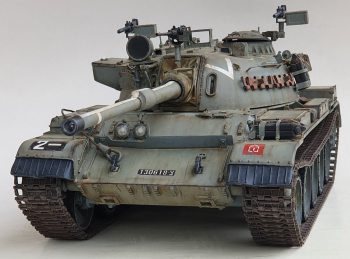
By Mario Covalski
The aim of this tutorial is to share with the reader the modifications made on the 1/16 T-55 from the firm Hooben, to convert it into a Tiran 5 of the IDF (Israeli defence forces), a small modelling project that I wanted to do since several years ago. Besides to help the reader, especially to those who has never built a Hooben T55, to solve the problems I had to deal with, alert them to several problems that appears after some use, like it happened to me with the one built in 2011 (the old kit version). As I said before, I built a regular T-55 of the Russian army and the IDF Tiran 5, but in the basic assembly steps, I’ll concentrate in the general points. So here you will see pictures of different models, about the same topic.
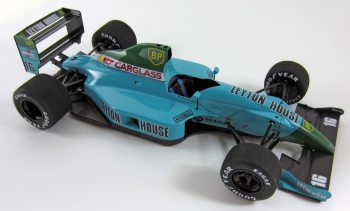
By Antonio Busciglio
This tutorial aims at sharing the building process for the Tamiya kit. The Leyton House is a typical Tamiya kit of the nineties, with good quality and details, but with several fitting issues. I wanted to build a curbside model, focusing on the car shape and livery, rather than the inner mechanical details. It would be an almost OOB build, with modifications only when they were necessary to achieve a better fit and / or to increase the overall realism.
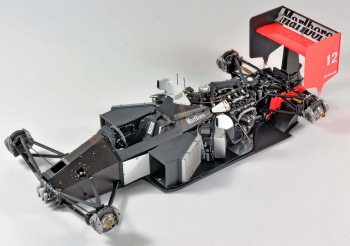
By Antonio Busciglio
The Tamiya kit represents very well this icon of the 1988 season in its general shape but not regarding the mechanical parts and the cockpit area. As this is one of the F1s I like best, I decided to build it adding the superb Top Studio detail set (TS in the text) that includes resin and PE parts what makes novices to modelling feel fear. Besides, I’ve added several modifications and extra details which were necessary adding an extra effort. This article is to share my work with the hope that those who are less experienced than me, can build this model with some extra help.
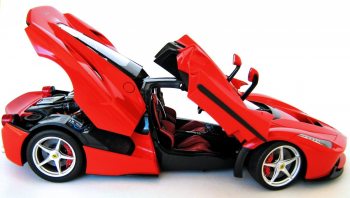
By Felice Ferriello
Tamiya offer an excellent model for Ferrari lovers, that can’t be missing in a collection. In my opinion, it’s a very complex kit so not recommended for novices or those who want to spend some time distracted and relaxed with a simple model. Its complexity obliges you to study very carefully the instructions preparing a building plan, altering the instruction steps to get a good result.
This article aims at sharing with the reader the work achieved during several months to superdetail this beautiful model, providing lots of images.
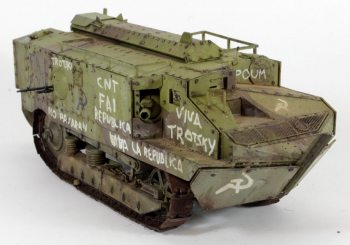
By Federico Collada
The Schneider CA-1 was the first operative combat tank of the world developed in France in 1916. In April 1917 it would be used in large number at Berry-au-Bac during the infamous Nivelle Offensive. This article shows how I built the late CA-1 which was used in Spain after the First World War ended. For this modification, I used the FCModeltips conversion and decals.
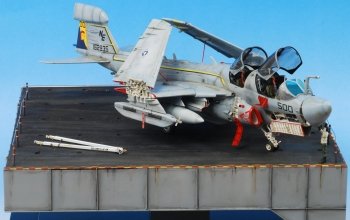
By Jose I. Hernandez Diez
I have always been completely captivated by this fantastic aircraft, and in late 2006, when I decided to assemble it, the only model available was the 1/48 Monogram's kit ( still the Kinetic and Italeri didn't have been issued). It's an old kit that shares parts with the A-6 Intruder, Monogram modified some parts and other were discarded. The raised panel lines the lack of details makes this kit as obsolete comparing with nowadays the industry offers. I had to deal with endless amount of errors I will talk about later in the article.
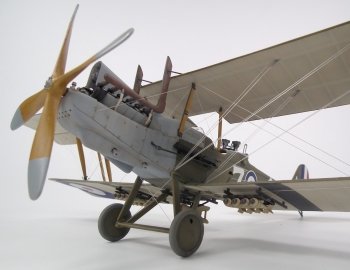
By Michael Capell
Looking at the kits plans the rigging looked daunting to put it mildly. Not only that but there is also additional rigging on the top wing as well, oh dear!
We all know of Wingnuts much deserved accolades so instead of repeating how good they are lets deal with rigging which modelers seem to dread. Building biplanes are a passion for me and rigging in particular. So let me show you what can be achieved.
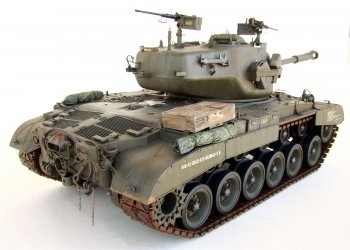
By Mario Covalski
I consider of no use to make an introduction about the Pershing, one of the best known military tanks of WWII. In my opinion the Tamiya kit let us represent a superb M26 not only for the scale (1/16) but also due to the level of details. About 30 years ago Tamiya released their first RC tank, the M4 Sherman. Since then, the quality of the models in 1/16 has improved in such a way that this version has nothing to envy his brother in 1/35 scale.
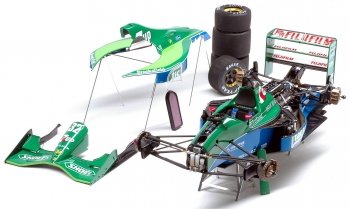
By Joachim Kutt
This build report is about superdetailing the 1/20 Tamiya kit and turning the Jordan 191 into Schumacher’s ride. The kit, a typical Tamiya product of the time, represents the Silverstone race version most closely, so some modifications were necessary besides adding the correct decals from Studio27.
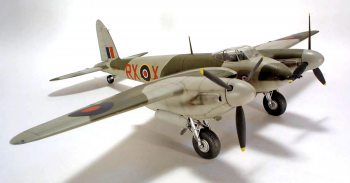
By Claudio Kalicinski
The DeHavilland Mosquito was a British combat aircraft that excelled in a number of roles during the Second World War. Originally conceived as an unarmed fast bomber, uses of the Mosquito included: low to medium altitude daytime tactical bomber, high altitude night bomber, pathfinder, day or night fighter, fighter-bomber, intruder, maritime strike and photo reconnaissance aircraft.
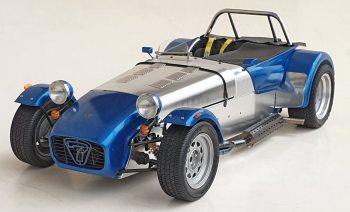
By Mario Covalski
In 1993, when I discovered the 1/12 Tamiya Caterham, I absolutely fell in love with the kit and let me confess that after 15 years, I still feel the same. I've built 13 models based on the 10201, 10202 and 10203 Tamiya kits. Since the kits are so pricey, some of those models were sold to collectors and others were disassembled in order to build new versions. Speaking about this kit, last year in particular was quite intense since I built five models, combining parts, aftermarket...all in all, creating something new from the same parts. The one I'll show you here, was the last of that series, with a vintage look, sport style and some extra details that a car being on the leading edge of technology might have nowadays.
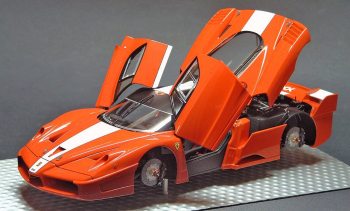
By Alessandro Prini
I have already admitted I do not like the Enzo and, less than ever, now the Fxx. Difficult, in my opinion to build something more ugly, but this car is pure technology and the E.Jan transkit sounded immediately like an interesting challenging project. Once studied the contents, I opted to replicate the Fxx lifted on air jacks, wheels off and doors opened. Obviously with the engine well visible.